Get ready to capture the frozen magic of the world’s last frontier with these Antarctica Cruise Photography Tips from Tamron Ambassador Dalton Johnson.
By Guest Contributor and Tamron Ambassador Dalton Johnson
Embarking on an Antarctica cruise is a once-in-a-lifetime adventure — a journey through a world of icebergs, curious penguins, and whales framed by the Southern Ocean. For photographers, this frozen frontier offers unparalleled opportunities to capture the beauty of the planet’s last wilderness.
In this guide, Dalton Johnson shares his expert Antarctica cruise photography tips, from how to photograph icebergs and wildlife to mastering whale photography and selecting the best camera and lenses for Antarctica. Whether you’re joining a specialized Antarctica photography tour or simply looking to elevate your photography in Antarctica, Dalton’s insight will help you create breathtaking images and make every moment of your Antarctica photography cruise truly unforgettable.
What You’ll Learn In This Article:
- Photography gear you need to pack for your Antarctica Cruise
- Creating images using scale, especially important for iceberg photography
- Maximizing your photography opportunities by making the most of each excursion
- A guide for creating once-in-a-lifetime images onboard your expedition cruise ship in Antarctica
The elation I felt as our ship’s engines thrusted the waters, pushing us away from the Ushuaia docks, is still indescribable. For this assignment, I was able to bring my Mom, and we had a balcony room that looked out on the cloud covered mountain tops lining the Beagle Channel. We were aboard the Sylvia Earle with Aurora Expeditions and AdventureSmith Explorations. Our course was set to cross the infamous Drake’s Passage and arrive at the Antarctic Peninsula in 2-3 days’ time depending on weather.
On this Antarctica cruise we would explore both the Waddell Sea and the Southern Ocean, with the goal of dipping below the Antarctic Circle, all the while photographing wildlife such as whales, penguins, and seals. Not to forget snapping images of our kayaking outings, the barren landscape, and icebergs floating in the water.
Camera Gear You Need to Pack for an Antarctica Photography Cruise
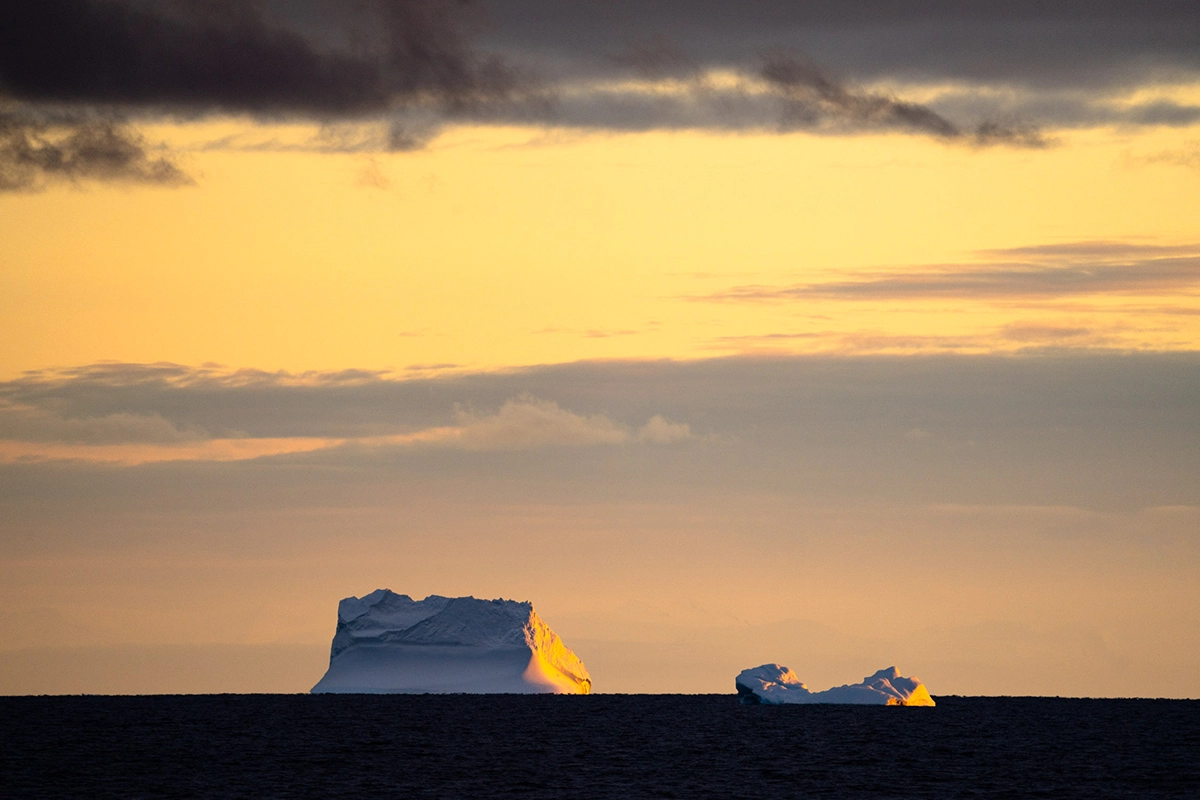
As I unpacked my camera bag and set up a digi-tech station that would live on the small desk the entire Antarctica cruise, I quickly reflected upon how my last decade as a professional adventure travel photographer, filmmaker, and writer had landed me an assignment to Antarctica aboard an expedition cruise ship. This little step of creating a work station would be critical for the long trip, providing me a consistent space to keep my gear organized, upload/backup images, and clean my gear.
My Antarctica Cruise Photography Gear
Cameras:
- Sony α7R IV: Best camera for Antarctica if you want high resolution images
- Sony α7S III: Best camera for video and low light photography
- GoPro Hero: This was for my Mom; but she ended up not using it
Lenses:
My Tamron lenses are all weather-sealed and have a fluorine coating on the front element, so they are easy to keep clean.
- Tamron 150-500mm: Best lens for Antarctica to capture wildlife and textures
- Tamron 28-200mm: An all around lens I kept with me to capture the daily moments
- Tamron 17-28mm: Best lens for landscapes, kayaking with a POV, and on ship images
- Tamron 28-75mm: Great standard zoom with fast aperture for low light shots
Accessories and Computer Gear:
- Circular Polarizer: A must for iceberg photography and cloudy skies
- Memory Cards: 2TB worth
- Batteries: I brought 6 batteries for the cameras and 3 for the GoPro
- Chargers: I make sure to bring at least two ways to charge batteries on all expeditions
- 2 Drybags: To keep my extra gear dry while kayaking and on the zodiac
- Cleaning Kit: I don’t think anyone should leave on an Antarctica photography tour without a cleaning kit
- MacBook Pro: My work horse for all things digital; just know you will have limited wifi/internet on a cruise ship in Antarctica
- 5TB External Hard Drive: To back up the footage and photos on the trip
- Notebook / Journal: Keeping personal logs and notes allows me to reflect and write things like this for others
While my photography kit fills up an entire suitcase, you can pair down to fit your needs.
My Recommended Lightweight Essential Kit:
- Tamron 25-200mm F2.8-5.6
- Tamron 150-500mm VC
- Tamron 16-30mm F2.8 G2
- Sony α7R IV
- Circular polarizers for each lens
- 2 batteries
- 2 memory cards
- Cleaning kit
- 2 dry bags
Top Antarctica Cruise Photography Tips for Incredible Wildlife and Iceberg Photos
Whether your cruise is a special Antarctica photography cruise, or a general Antarctica cruise, the following tips will help you navigate photography in Antarctica.
TIP 1: Use Scale to Capture the Immense Beauty of Antarctica
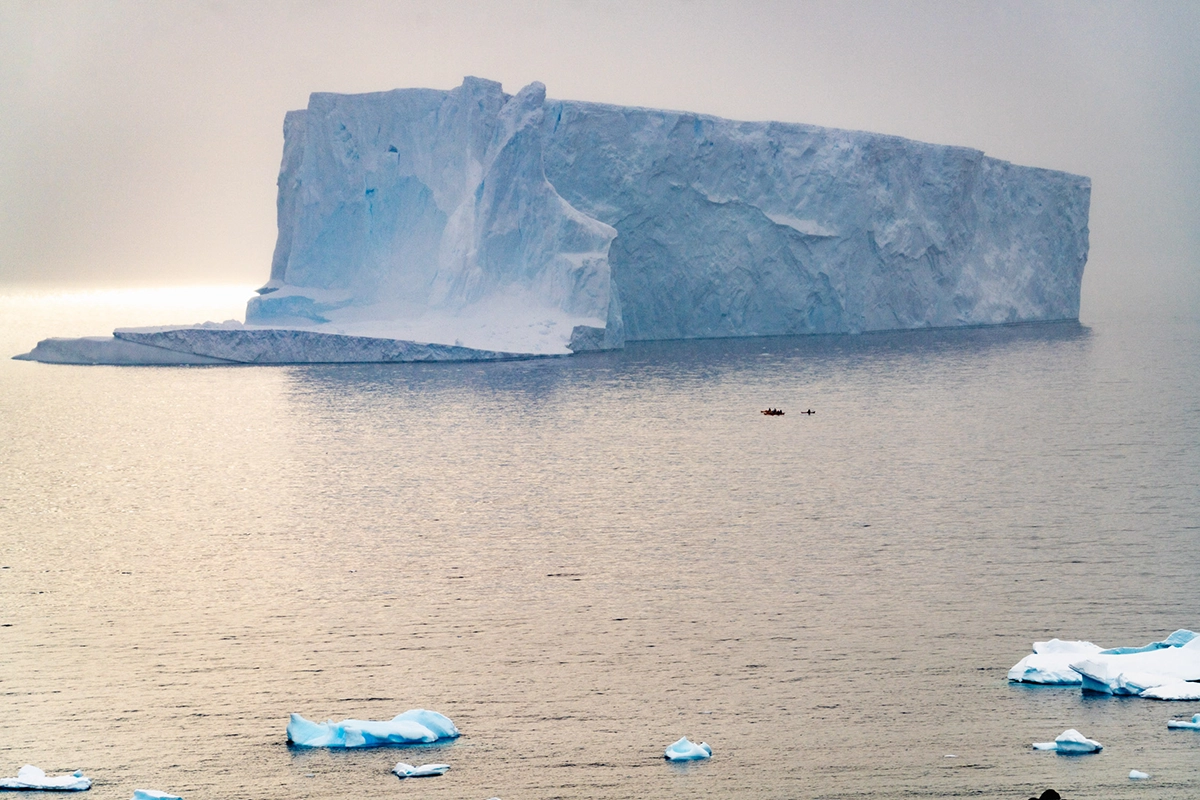
Whether you are taking iceberg photos, or images of penguin colonies, scale is your friend when photographing in Antarctica. See the iceberg photograph above as an example. If the two black dots of people in kayaks that are 10 to 15 feet long were not there, could you guess the size of this iceberg? I know I could not. The image would contain nothing to compare to in knowable size. So, I waited for the kayakers to arrive next to the iceberg so I could showcase the grand size of this 100-200 foot tall iceberg. WOW!
Ways To Capture Scale In Antarctica Photographs
- Use humans for scale in comparison to subject
- Use the cruise ship as scale when on zodiac tours
- Use houses or research huts
- Use wildlife to showcase the scale of the population (especially important for penguin colonies)
My Best 3 Tips For How To Photograph Icebergs
- Use a circular polarizer to cut down on highlights: When photographing icebergs, the snow and ice reflect the light, so make sure to cut down on that reflection with a circular polarizer.
- Iceberg photography is not one-size fits all: Icebergs come in all different shapes and sizes as well as moving speeds. Try different shutter speeds, focal lengths, and compositions on each iceberg you photograph.
- Utilize leading lines to draw the viewers eyes to the iceberg: For example, red kayaks pointing to a stunning arch in one of the most impressive icebergs we saw on the whole photography expedition in Antarctica created a leading line. In another example, a visible line in the water created from the ship’s propellers drew the viewer’s eye to the iceberg (see images below).
TIP 2: Don’t Skip Excursions — Bad Weather Can Lead to Epic Whale Shots

Cruise ship expeditions to Antarctica are long, ranging from 10-40+ days, so you will get tired. Do everything you can to be ready for the day’s excursion. There were times I did not want to go, or had friends on the ship who did not go, and they missed out on critical one-time only experiences.
An example of this was a whale fluke with the ship in the background. I visualized several images before going on any expedition, sometimes drawing them out, and a whale photograph with the ship in the background was one of those images. To me, this image gives a sense of wildlife wonder and grounds the viewer in the reality that getting here required an expedition ship.
Whale Watching Photography Tips For Antarctica
- Always have your camera on and set to the ideal settings: Wildlife appears and disappears quickly, especially aquatic wildlife like whales. So, keep your camera handy, with a high shutter speed, autofocus on, and in burst mode so you can be ready at a moment’s notice for whale photography.
- Learn whale behavior: Whales, like most mammals, are habitual creatures. Learning the patterns allows you to take better images. For whales, this will be their diving patterns. If you see a fluke, they dove deep and won’t show up again for 20-45 minutes. If they take a breath, it’ll only be 10 minutes or so.
- Zodiacs are tight in space, be careful swinging your lens around: You don’t want to knock somebody overboard because you hit them with your lens because you are so excited to see a whale. Be aware of those around you!
TIP 3: Review and Share Your Photos Onboard to Improve Your Antarctica Photography

One of the biggest mistakes you can make is running out of space on your memory cards mid-zodiac photography tour while in Antarctica. To prevent this, there are two options:
- First, bring extra memory cards.
- Second, upload your images each night and format the card the following day.
I personally prefer the second option because it is safer for my camera. Also, when you spend the time reviewing your images the same night you took the images, you can see how you need to improve.
Another benefit of reviewing your images the same day is that you can share them with others on the ship. Together you will build a bond, and you can learn from each other. Seeing how others create is a huge win for developing photographers.
Questions to Ask Yourself When Reviewing Your Antarctica Photographs:
- How is my focus? Try using back button auto-focus.
- How sharp is my image? Do you need to increase the shutter speed?
- Is the image exposed correctly? Try adjusting your ISO.
- How is my composition? Think rule of thirds.
- How can I make this better next time?
TIP 4: Respect the Wildlife — You’re Visiting Their Home, Not a Petting Zoo
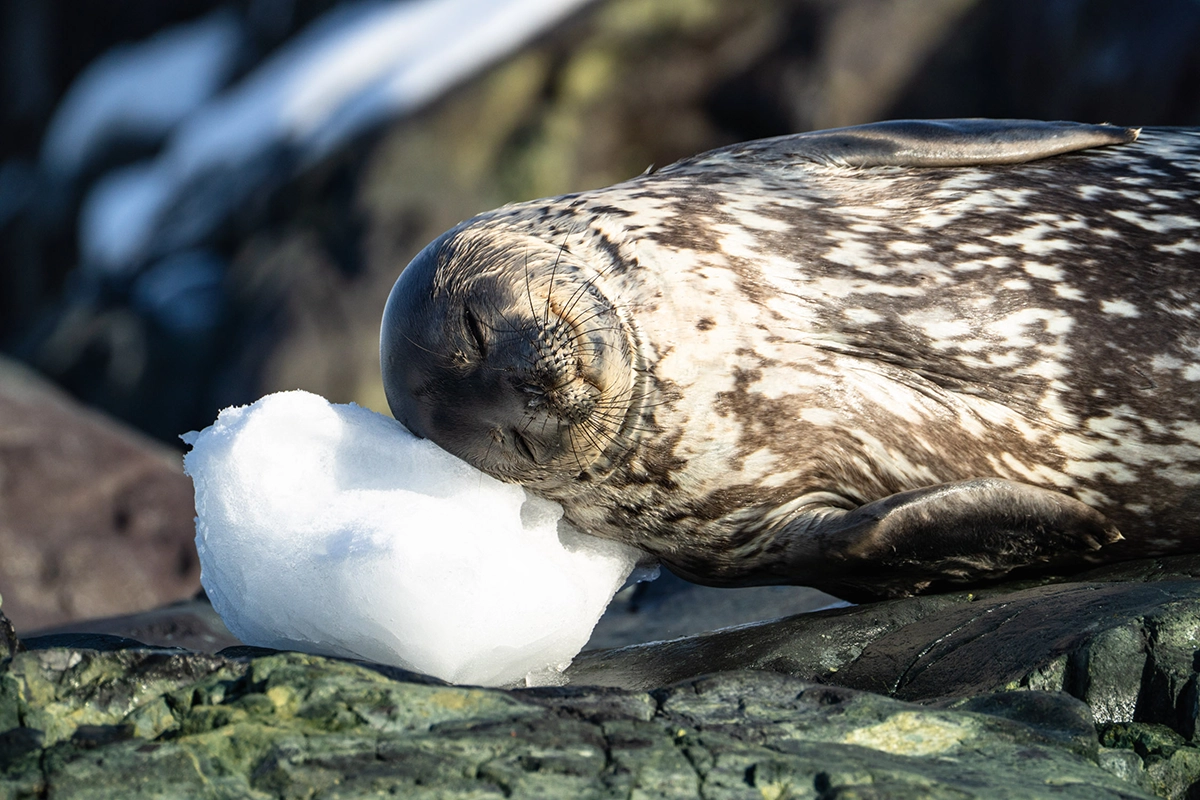
I feel this goes without saying, but these animals are wild. While they look cute and cuddly, especially this seal napping on a grower “iceberg” as a pillow, don’t try to pet them and keep your distance.
- If you are in a kayak, getting too close is very easy, especially when the animals are “doing nothing.”
- If you are on land around penguins, let them approach you to avoid scaring them.
- When you are on the cruise ship follow their rules
TIP 5: : Familiarize Yourself With the Ship for the Best Antarctica Cruise Photography Angles
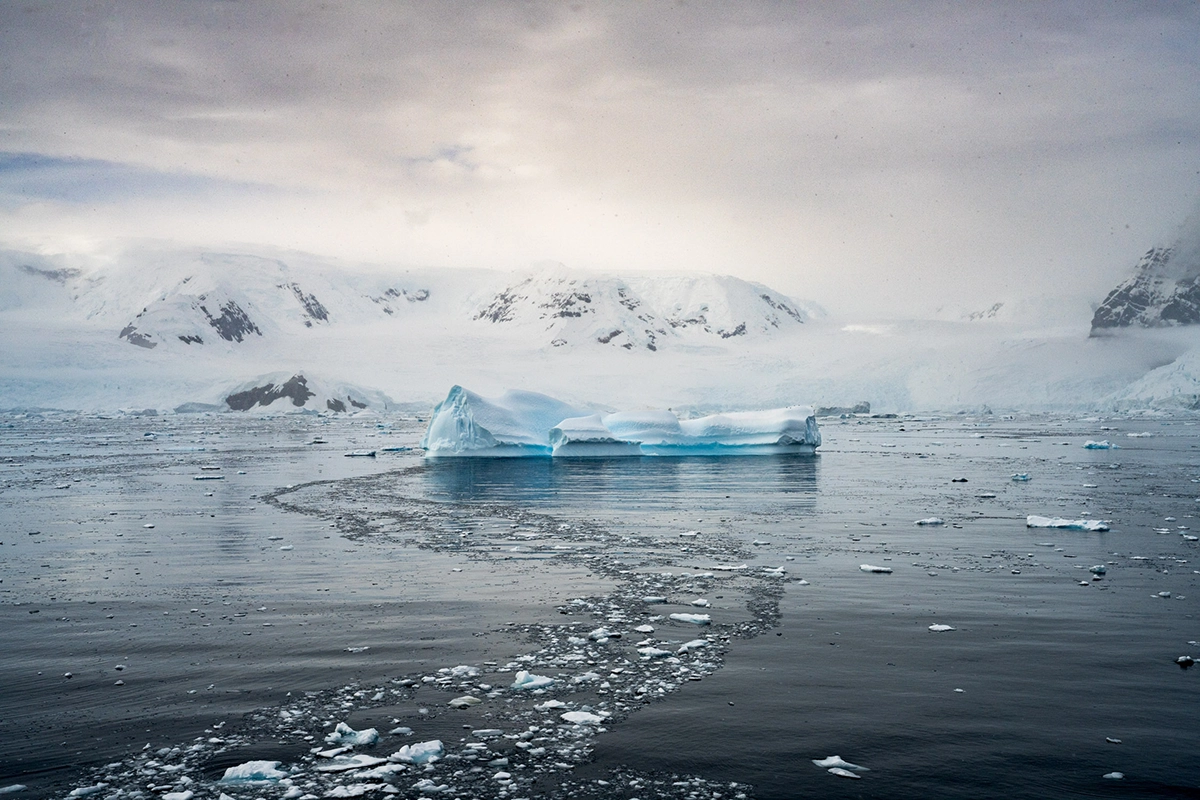
At first glance, this tip may sound like a safety precaution, but it is really about knowing how to create the best images possible from your ship. Most expedition cruise ships to Antarctica are smaller, so getting around is easy, but you need to know where to go.
Best Photography Spots Aboard Your Antarctica Cruise Ship
| Ship Location | Pros | Cons |
|---|---|---|
| Top Level | Excellent for landscapes, aerial-style shots, and spotting wildlife; dramatic perspective for iceberg and whale photography. | Satellite equipment may block shots; limited space to move. |
| Mid-Level Decks | Ideal for framing the ship as foreground; great for portraits, community, and storytelling; easy access around ship. | Views can become repetitive without creative composition. |
| Ocean Level | Perfect for close-up wildlife and iceberg photography; brings perspective similar to zodiac excursions. | Areas may be closed in rough seas; limited shooting space. |
| Inside Looking Out | Frames Antarctic scenes through windows; evokes intimacy and reflection; ideal for Antarctica wildlife photography. | Restricted view — limited angles. |
| Bow (Front of Ship) | Classic shots of ship cutting through ice channels; great for whale watching photography and landscape scale. | Popular spot — crowds and similar shots common. |
| Stern (Back of Ship) | Tells the story of where you’ve been; includes zodiacs, tools, and authentic ship activity. | Often shadowed; may be used as smoking area. |
| Loading Dock | Action-filled area showing expeditions and operations; potential for storytelling images. | Access restricted; safety concerns — requires permission. |
| Your Room / Balcony | Personal perspective; great for candid portraits and photographing the Antarctic landscape at sunrise or sunset. | Limited creative angles and space. |
TIP 6: Combine Elements to Create Standout Antarctic Wildlife and Iceberg Images
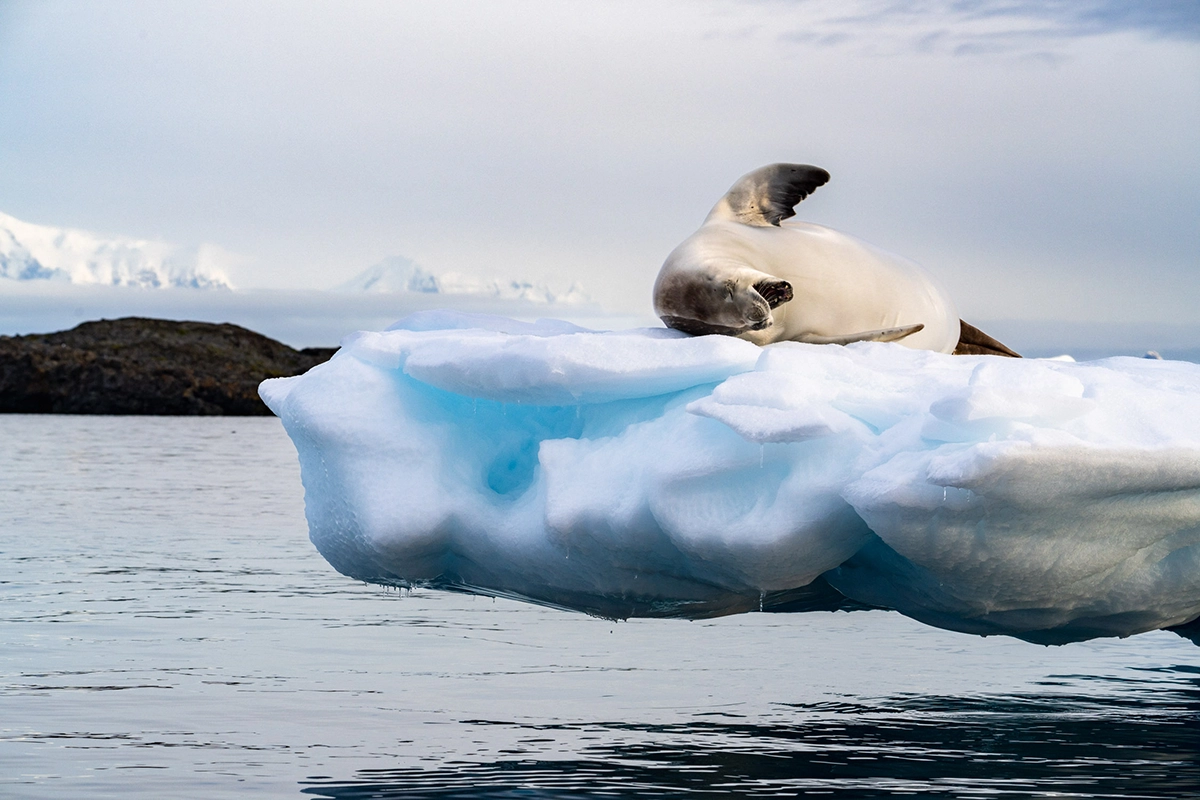
At the end of your trip, you’re going to want a few images that really stand out, but doing so can be challenging. However, if you put all the information together, you will have a handful of images so good you’ll want to hang them on your wall. So, what do I mean by putting everything together?
- Previsualize an image, head out with the intention of getting that shot, and creating it.
- Meanwhile leave yourself open to a few unique elements that stop you in your tracks.
A prime example of this is the image above of a yawning crab-eater seal “floating” in off the water on an iceberg. I wanted to get a shot of a seal on an iceberg that was different from most images you see on the internet.
At the end of the day, when we were heading back to the ship in the zodiac, I saw this seal and asked the expedition crew member to “quickly zip by.” The light was perfect, the background was cloaked in a mysterious cloud, and the seal was enjoying its evening nap.
Stay In Touch
Good luck on your expedition to Antarctica and if you have any questions, please reach out via email: dalton@dalton-johnson.com I am here to be a resource for you all. Thank you for reading this article and consider signing up for my weekly newsletter, UnBound, where I share weekly adventure stories and photography tips.
Go live an adventurous life ✌️
Plan Your Own Antarctica Photography Expedition With Tamron Gear
Learn more about Tamron lenses for your Antarctica cruise at an authorized Tamron dealer near you or shop directly at the official TAMRON Store.
About Dalton Johnson
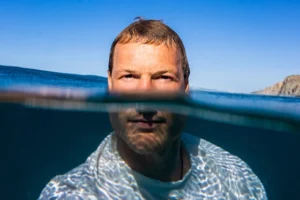
Dalton Johnson is a commercial and documentary photographer/videographer who specializes in authentic content that tells a story. While most of Dalton’s portfolio comes from hard to reach places in the mountains and the ocean, he is no stranger to creating content that connects with the average Joe. Notching over 100 campaigns in his belt, for clients like Ford, Men’s Journal, B.F. Goodrich, Surfline, Patagonia, and many more, Dalton’s vast body of work has one thing in common, authenticity. Website | Instagram
FAQs: for Antarctica Cruise Photography Tips
1. What camera gear should I pack for an Antarctica cruise?
When preparing for an Antarctica photography cruise, pack a versatile setup that covers landscapes, wildlife, and shipboard scenes. A high-resolution camera like the Sony α7R IV paired with Tamron’s 150–500mm for wildlife, 28–200mm for daily shots, and 16-30mm for landscapes is ideal. Don’t forget extra batteries, memory cards, and a circular polarizer for iceberg photography.
2. What’s the best camera for Antarctica photography?
The best camera for Antarctica is one that performs well in cold conditions, offers excellent image stabilization, and provides flexibility for both stills and video. Mirrorless models like the Sony α7R IV or α7S III are reliable choices for photography in Antarctica thanks to their weather sealing and dynamic range.
3. What lenses are best for photographing whales, penguins, and icebergs?
For whale photography and wildlife, use a telephoto zoom such as the Tamron 150–500mm F/5–6.7 Di III VC VXD. For icebergs and penguins, pair a wide-angle lens like the Tamron 16–30mm F/2.8 Di III VXD G2 to capture the landscape’s vast scale and depth. Having both wide and telephoto options lets you photograph Antarctica’s wildlife and scenery with flexibility.
4. How do I photograph icebergs in Antarctica?
To get great iceberg photos, shoot when the light is soft (early morning or evening) and use a circular polarizer to cut glare off the ice and water. Play with scale — include a zodiac, kayaker, or ship in the frame to convey size. Adjust shutter speed and composition depending on whether the iceberg is drifting or stationary.
5. What are the best tips for photographing whales in Antarctica?
When shooting whales on an Antarctica cruise, keep your camera ready in burst mode with a fast shutter speed. Anticipate whale behavior — after a fluke, they may not resurface for 20–40 minutes, but if they take short breaths, they’ll be back quickly. Patience and readiness are key to capturing that perfect tail shot with your cruise ship in Antarctica as the backdrop.
6. Can I photograph wildlife up close during an Antarctica photography tour?
Always respect local guidelines. You’re not in a petting zoo — keep a safe distance from wildlife like penguins, seals, and whales. Use your telephoto lens to fill the frame instead of approaching animals. Ethical Antarctic wildlife photography means letting the animals act naturally while you document from afar.
7. How can I make the most of photography opportunities on an Antarctica cruise?
Go on every excursion, even in bad weather — sometimes dramatic skies make the best images. Review your shots each evening, back up your files, and connect with other photographers on the ship. Sharing experiences and techniques often leads to stronger images and lasting friendships during your Antarctica photography expedition.
8. What should I know before going on an Antarctica photography cruise?
Expect limited Wi-Fi, extreme weather, and unpredictable lighting. Prepare your gear for moisture and cold, carry backups, and know your camera settings well before you sail. Above all, stay flexible — conditions change fast, but that’s part of the magic of photographing Antarctica.
